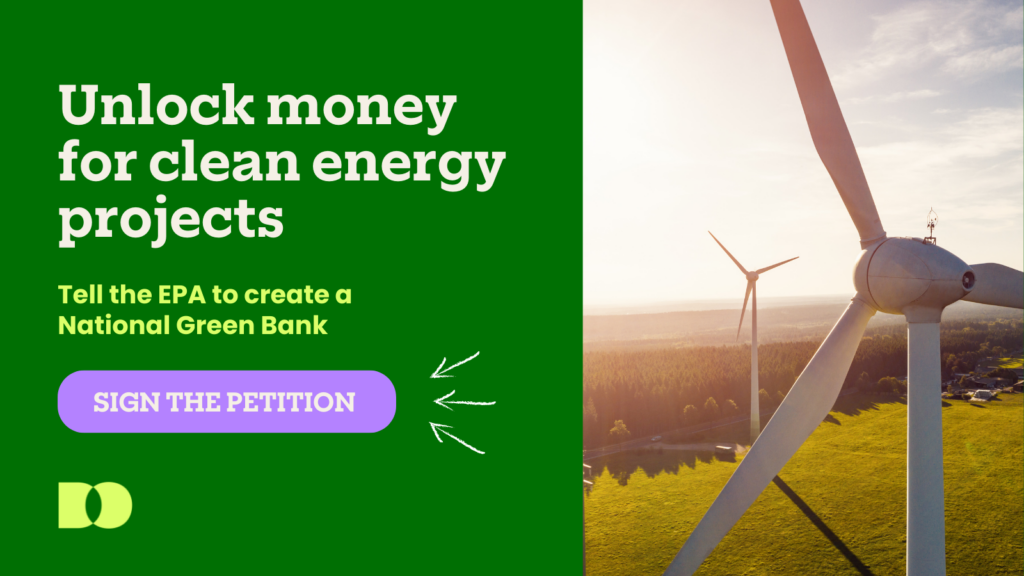Banking on a Greener Future
Authored by Daniela Nyiri, Green Bank Policy Consultant
If you’re a person of color, an indigenous person, low income, or live in a rural community, you’re more likely to feel the pain of climate change. And even though billions of dollars are spent annually on clean energy projects, these communities are frequently excluded – left out from the many benefits of green tech like reduced energy costs and job opportunities.
But that is all changing. With the passage of the Inflation Reduction Act, the Biden Administration allocated $27 billion towards a Greenhouse Gas Reduction Fund (GGRF) to supercharge a green transition. Now the hard work begins of ensuring this funding reaches communities that need it most. And to do that, we need to create a National Green Bank.
What’s a Green Bank?
Like an investment bank, it provides funding needed to get a project started. But a green bank is specifically designed to help more clean energy projects get off the ground. This isn’t a new idea. Currently, the US has over 20 green banks in operation, and in 2020 they collectively used $442 million of public capital to mobilize $1.69 billion in private dollars toward clean energy adoption. By making a National Green Bank, we can make that impact even greater, but the clock is ticking.
The Environmental Protection Agency (EPA) only has 180 days to award GGRF funding to deserving grant recipients. That timeline will make it hard - if not impossible - to make sure the money is distributed to communities that are most vulnerable to climate change.
That’s why – instead of the EPA racing to give out $27 billion in just a few months – we’re calling for the EPA to use at least $20 billion in GGRF funding to create a National Green Bank so that we can have the time needed to cut costs, and ensure we’re using our resources effectively.
Change is Impossible Without Accountability
Even though the GGRF is a national investment, a National Green Bank creates a significant opportunity to fund climate solutions at both local and state levels – now and in the future.
Operating as an independent non-profit, the National Green Bank would act as an intermediary between stakeholders, EPA, Congress, and recipients so that:
- No one is alienated from the process
- Plans are properly implemented and meet all the IRA and EPA requirements.
Unlike an EPA grant program, we can make sure investments are built around a community's needs by empowering other local and state-wide green banks, local CDFIs, venture capitalists, minority depository institutions, and other nonprofits to make their own region-specific decisions and investments.
A Green Future Starts Today
We’re at a critical point in history and the Greenhouse Gas Reduction Fund provides us with a stepping stone we need to mobilize individuals, entities, and sectors, together, alongside the transition instead of against it.
If the EPA fails to create a National Green Bank, they’ll forgo the opportunity to maximize the impact that $27 billion can have on marginalized communities who have been disproportionately impacted by the climate crisis.
This can change today.
We need your voice. The EPA won’t move forward with this strategy without ample public support. Join us in urging the EPA to build an equitable and transformative future by using GGRF funding to create a National Green Bank.

